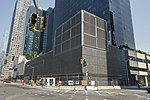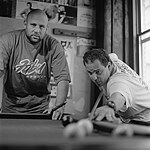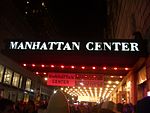Murder of Timothy Caughman
2010s in Manhattan2017 crimes in New York City2017 murders in the United StatesCrimes in ManhattanDeaths by person in New York City ... and 11 more
Deaths by stabbing in New York (state)Hell's Kitchen, ManhattanHomelessness in the United StatesMarch 2017 crimes in the United StatesNeo-fascist terrorist incidents in the United StatesRacially motivated violence against African AmericansStabbing attacks in 2017Stabbing attacks in the United StatesTerrorist incidents in New York CityTerrorist incidents in the United States in 2017Terrorist incidents involving knife attacks
On March 20, 2017, Timothy Caughman, a black 66-year-old man, was collecting cans for recycling in the Hell's Kitchen neighborhood of Manhattan, New York City when James Harris Jackson, a white 28-year-old man, approached him and stabbed him multiple times with a sword. Caughman later died of his injuries. Jackson subsequently turned himself in to police custody and confirmed that he traveled from Maryland to New York with the intention of killing black men in order to prevent white women from having interracial relationships with them.
Excerpt from the Wikipedia article Murder of Timothy Caughman (License: CC BY-SA 3.0, Authors).Murder of Timothy Caughman
West 36th Street, New York Manhattan
Geographical coordinates (GPS) Address Nearby Places Show on map
Geographical coordinates (GPS)
| Latitude | Longitude |
|---|---|
| N 40.75466 ° | E -73.99528 ° |
Address
West 36th Street 371
10018 New York, Manhattan
New York, United States
Open on Google Maps











